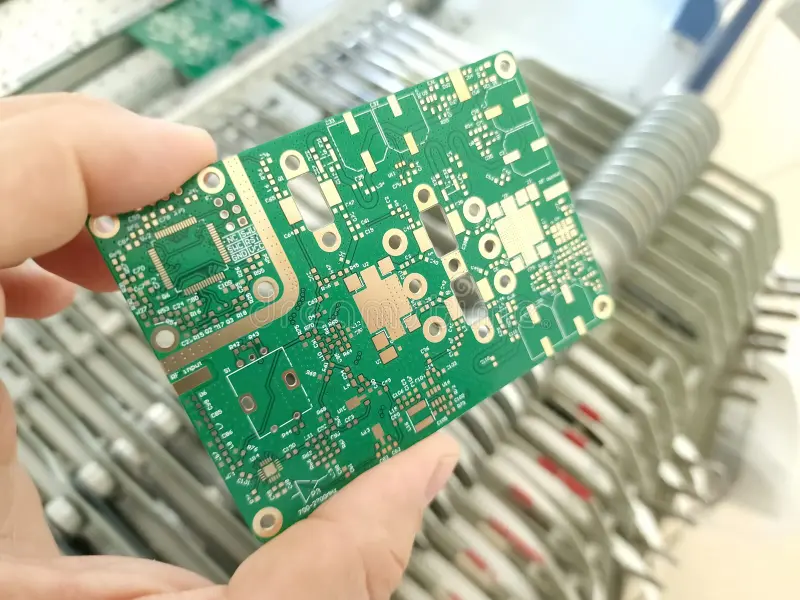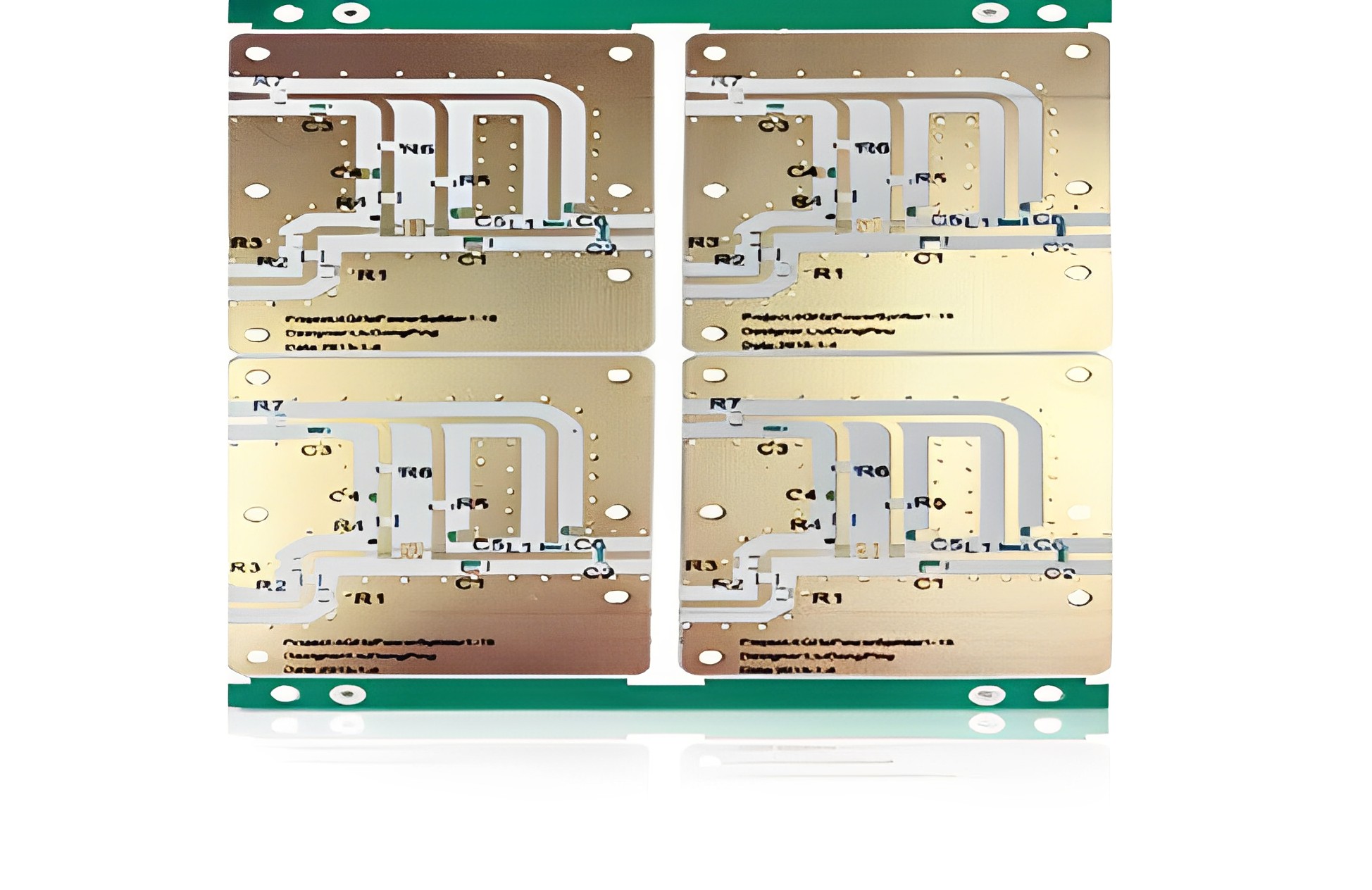In today's society, wireless communication systems are ubiquitous. From mobile phones to satellite communication, from wireless local area networks to radar systems, wireless communication has become an essential part of our daily lives and commercial activities. In these wireless communication systems, Radio Frequency Printed Circuit Boards (RF PCBs) play a crucial role. So, what exactly is an RF PCB? And why does your wireless communication system need an RF PCB?

First, let's understand the definition of a radio frequency printed circuit board (RF PCB). An RF PCB is a specially designed and manufactured printed circuit board used for transmitting telecommunication signals within the radio frequency spectrum. RF circuits refer to circuits that operate within the radio frequency spectrum and are used in applications such as wireless communication, radar, wireless sensor networks, satellite communication, and more. These frequencies typically range from kilohertz to gigahertz. RF circuits play a crucial role in applications such as wireless communication systems, radar, satellite communication, radio broadcasting, and wireless sensor networks. Compared to regular circuit boards, RF PCBs require higher signal integrity, lower signal loss, good impedance matching, and reduced interference.

The design and manufacturing of RF printed circuit boards require special techniques and materials to meet the requirements of high-frequency signal transmission. Compared to conventional printed circuit boards, RF printed circuit boards demand higher signal integrity, lower signal loss, improved impedance matching, and reduced interference. Firstly, the material selection for radio frequency printed circuit boards is crucial. Commonly used materials include PTFE (polytetrafluoroethylene) and RF frequency laminates. These materials have low dielectric loss and excellent high-frequency characteristics, allowing for efficient transmission of high-frequency signals. Secondly, the circuit layout of the RF printed circuit board also requires special attention. Designers need to avoid crossovers and parallel routing between signal lines as much as possible to reduce crosstalk and mutual coupling. A well-designed circuit layout can improve signal transmission efficiency and reduce interference. In addition, the ground plane design of the radio frequency printed circuit board (RF PCB) is also crucial. A well-designed ground plane can reduce the resistance and inductance of the ground lines, thereby improving the transmission efficiency of signals. The continuity of the ground plane and low-noise grounding are key factors in ensuring high-frequency signal integrity. Impedance matching is an important consideration in the design of RF printed circuit boards. The design of signal lines and impedance-controlled dimensions such as line width, spacing, and layer thickness requires accurate matching of specific impedances to ensure proper signal transmission and minimal reflection losses. In addition, the radio frequency printed circuit board also needs to consider the issue of interlayer coupling. By employing appropriate interlayer grounding, shielding layer, and via design, the interlayer coupling effects can be reduced, thereby improving the transmission quality of signals. References: Lee, T. (2016). High-Frequency PCB Materials. In High-Frequency Integrated Circuits (pp. 153-174). Springer, Cham. Mithil, A., & Gharpurey, R. (2013). High-Frequency and RF Circuit Design Techniques for RF Transceivers. IEEE Transactions on Circuits and Systems I: Regular Papers, 60(8), 1989-2001. Ciccognani, W., Colantonio, P., & Giannini, F. (2012). Design of RF and microwave amplifiers and oscillators. Artech House.

So, why does a wireless communication system need a printed circuit board (PCB) for radio frequency (RF)? Here are several key reasons: High-frequency signal transmission: Wireless communication systems deal with high-frequency signals, and RF PCBs possess excellent high-frequency characteristics, enabling effective transmission and processing of these signals. Their design and manufacturing consider signal integrity and transmission efficiency, ensuring reliable transmission of high-frequency signals with minimal losses. Signal Integrity: In wireless communication, signal integrity is crucial. RF printed circuit boards ensure the stability and accuracy of signals by reducing signal crosstalk and coupling. By implementing proper circuit layout, ground plane design, and interlayer coupling control, RF printed circuit boards can minimize signal distortion and interference, enabling high-quality signal transmission. Impedance matching: Impedance matching is crucial in wireless communication systems. RF printed circuit boards achieve the matching of signal lines and impedance control through precise design of line widths, spacing, and layer thickness. This minimizes signal reflections and transmission losses, thereby enhancing system performance and efficiency. Interference Resistance: The RF printed circuit board utilizes shielding layers and via designs to effectively suppress the impact of external electromagnetic interference on wireless communication systems. This interference resistance is one of the key distinctions between RF printed circuit boards and regular printed circuit boards. High-performance requirements: Wireless communication systems have very high-performance requirements. RF printed circuit boards can provide better signal transmission, lower loss, and improved impedance control, thereby meeting the high-performance and stability requirements of wireless communication systems.

When it comes to the application areas of RF printed circuit boards (PCBs), they play a crucial role in various wireless communication and RF systems. Below are detailed descriptions of several key application areas for RF PCBs: Wireless Communication Systems: RF printed circuit boards (PCBs) are crucial components in modern wireless communication systems. Whether it is cellular networks for mobile communication, wireless local area networks (Wi-Fi), Bluetooth devices, or other wireless communication technologies, RF PCBs are used to facilitate the transmission, reception, and processing of signals. They enable high frequencies, low signal loss, and accurate impedance matching, ensuring signal stability and reliability. Radar and Radio Frequency Spectrum: Radio frequency printed circuit boards (RF PCBs) play an important role in radar systems and radio frequency spectrum monitoring. Radar systems utilize RF PCBs to transmit and receive high-frequency signals, enabling target detection and tracking. Additionally, in the field of radio frequency spectrum monitoring, RF PCBs are used to process and analyze a wide range of radio frequency spectrum signals, aiding in the monitoring and management of radio frequency spectrum usage. Radio Broadcasting: Radio broadcasting is one of the significant applications accomplished through radio frequency printed circuit boards. Broadcast stations and other radio devices utilize radio frequency printed circuit boards to transmit and amplify the radio signals emitted by the stations. These circuit boards can provide high-power output and stable signal transmission, ensuring the coverage and quality of the broadcast signals. Satellite Communication: Satellite communication is an important method of information transmission between communication devices on Earth and artificial satellites. RF printed circuit boards are widely used in satellite communication systems for transmitting and receiving high-frequency signals. These circuit boards need to have characteristics of high signal integrity and low signal loss to ensure reliable signal transmission and stable operation of satellite communication systems. Wireless Sensor Networks: A wireless sensor network is a network composed of numerous distributed sensor nodes used to collect and transmit environmental data. Radio frequency printed circuit boards play a critical role in wireless sensor networks by facilitating the transmission of data collected by sensor nodes and communication with the main control node. These circuit boards need to possess low power consumption and efficient wireless communication capabilities to extend the battery life of sensor nodes and enable remote data transmission. By utilizing RF printed circuit boards in these application areas, we can achieve stable transmission of high-frequency signals, preserve signal integrity, minimize interference, and optimize system performance. In summary, radio frequency printed circuit boards play an indispensable role in wireless communication systems. They can provide excellent high-frequency characteristics, ensure signal integrity and transmission efficiency, and possess good impedance matching and interference resistance capabilities. For engineers and designers who aim to build high-performance wireless communication systems, radio frequency printed circuit boards are an essential tool. Through proper design and manufacturing, they can ensure the reliability, stability, and performance of wireless communication systems, providing us with better wireless communication experiences in our daily lives and commercial activities.

Customer support